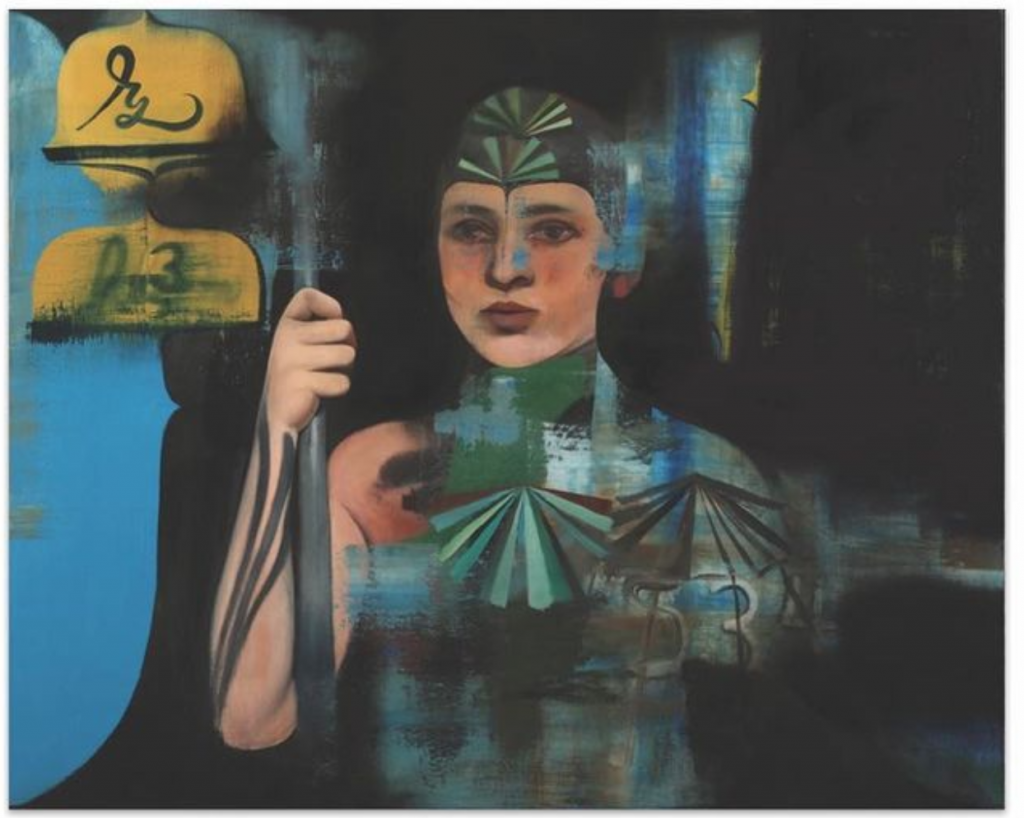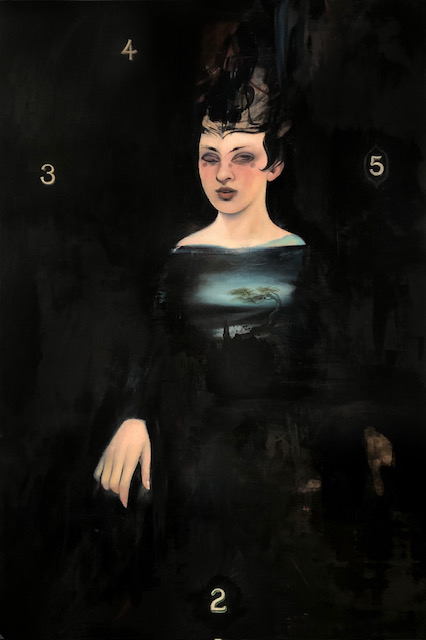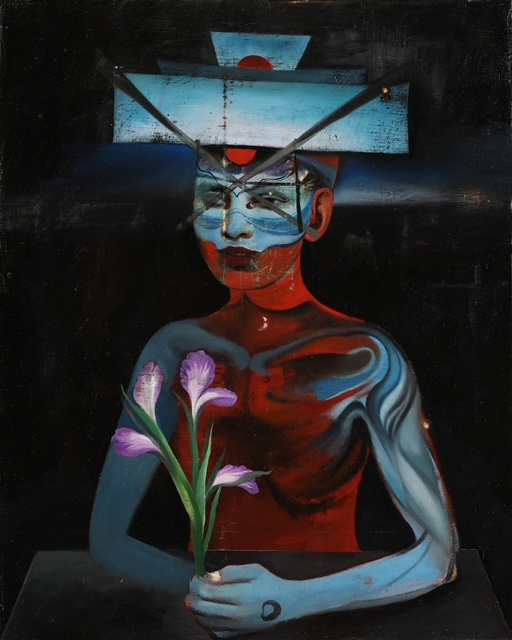K. Imperial Fine Art, San Francisco, California
Exhibition continues through July 29, 2024
July 6, 2024

Imogene – Oil on canvas 36” x 45” 2024
For the past 70 years, two figurative painting traditions have persisted in northern California. One is the Bay Area Figurative tradition, which fuses abstract expressionist paint handling to the depiction of everyday subjects. The other stems from the Funk generation’s interest in idiosyncratic cartoon fantasies.
Savignyplatz
Oil on linen 36 x 45 2024
Felix Macnee’s exhibition of a dozen recent paintings absorb and transmute those and other influences to revise and re-explore the once-vaunted idiom of portraiture. In so doing, he further complicates the already intricate problem facing any artist who seeks to portray another person: How can one simultaneously represent a specific individual and a generalized type at the same time?

Totem I – Oil on linen 60 x 40 2024
Most of the paintings here feature the head and/or upper torsos of elaborately costumed female figures centrally placed in a shadowy picture space, occasionally surrounded by cryptic insignias painted with old-timey drop shadows. The series is titled “Imogene,” a salute to his wife Imogene Chayes. Chayes is a self-described concept artist of some renown, working with costume creation in the film and television industry. This fact registers in the many ways that Macnee portrays her throughout the series. From painting to painting, Chayes is portrayed in guises ranging from Esther Williams-era swimwear to a lady in waiting at the sixteenth century Spanish court. In one work she appears as a fictional queen of outer space rescued from vintage science fiction illustrations.

Felix Macnee, “Iris,” 2024, oil on linen, 30 x 24”
Three of the paintings are profiles, while others regard their subjects from a three-quarter view. Still others address the viewer frontally, almost as if they were issuing an invitation or a challenge similar to Manet’s “Olympia.” The largest of these frontal works is titled “Totem I,” among the darkest of the many dark paintings, also the one that comes the closest to a full body depiction. In its shadowy space, we see an obscured figure regaled in what looks like antique mourning attire, ensconced within a shiny obsidian black surface. In this work and many others, Macnee uses an oil glaze technique to good advantage by suggesting two light sources, one illuminating the figure from the front and another seeming to emanate from within the picture surface like refractions from the facets of a precious stone. The visible hand seen in this work clearly owes something to the menacing paws depicted in Leonardo’s “Mona Lisa.”

Felix Macnee, “Pilot,” 2024, oil on linen, 40 x 50”
 Mark Van Proyen has written commentaries emphasize the tragic consequences of blind faith placed in economies of narcissistic reward. In 2020, he retired from the faculty of the San Francisco Art Institute, where he taught Painting and Art History. From 2003 to 2018, he was a corresponding editor for Art in America .
Mark Van Proyen has written commentaries emphasize the tragic consequences of blind faith placed in economies of narcissistic reward. In 2020, he retired from the faculty of the San Francisco Art Institute, where he taught Painting and Art History. From 2003 to 2018, he was a corresponding editor for Art in America .
Photo credit: Mary Ijichi

